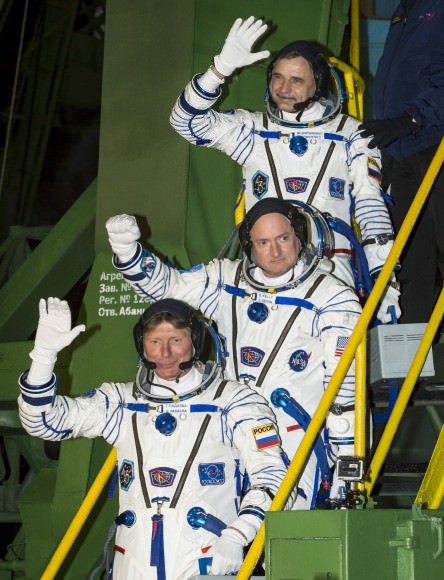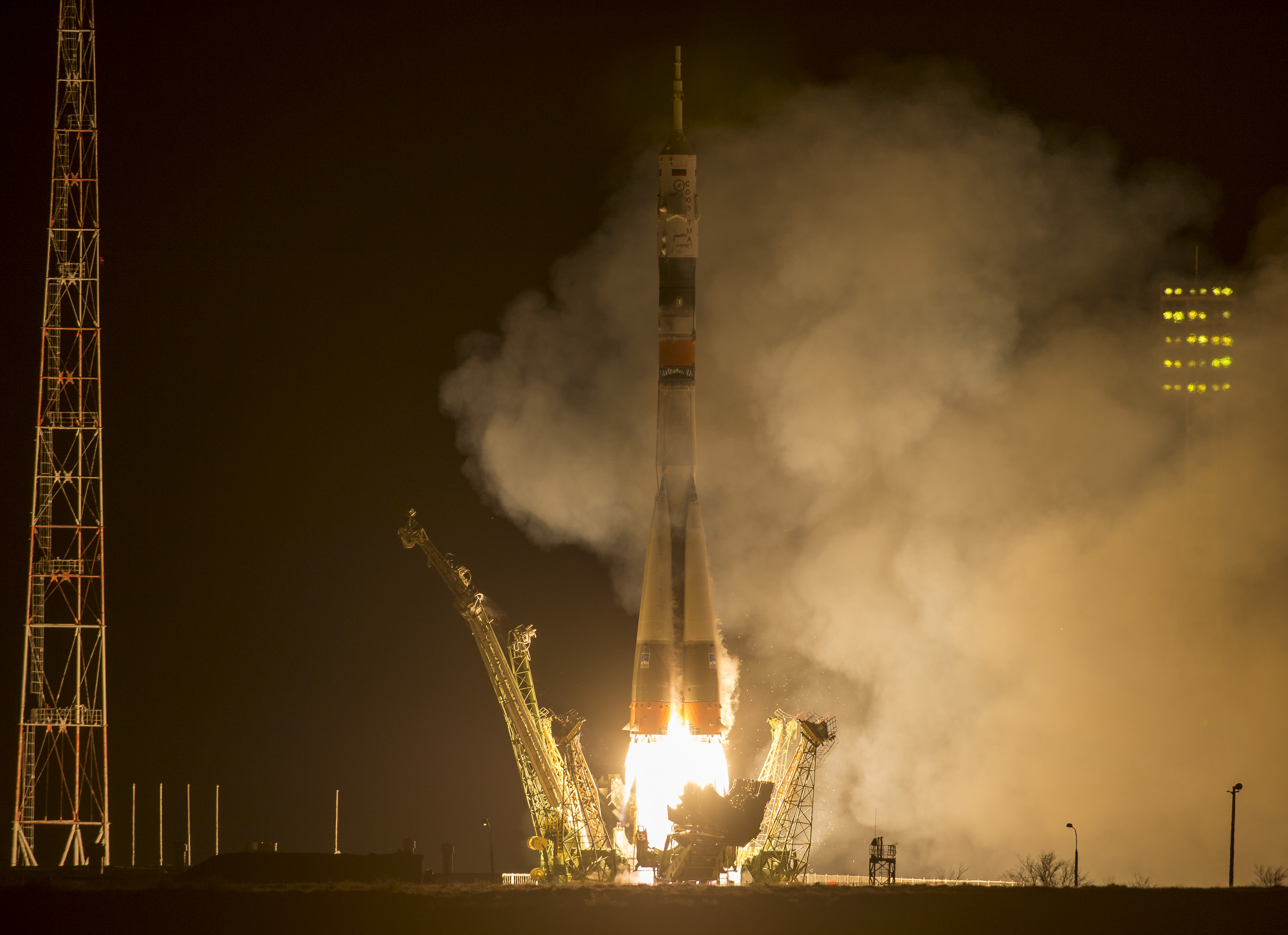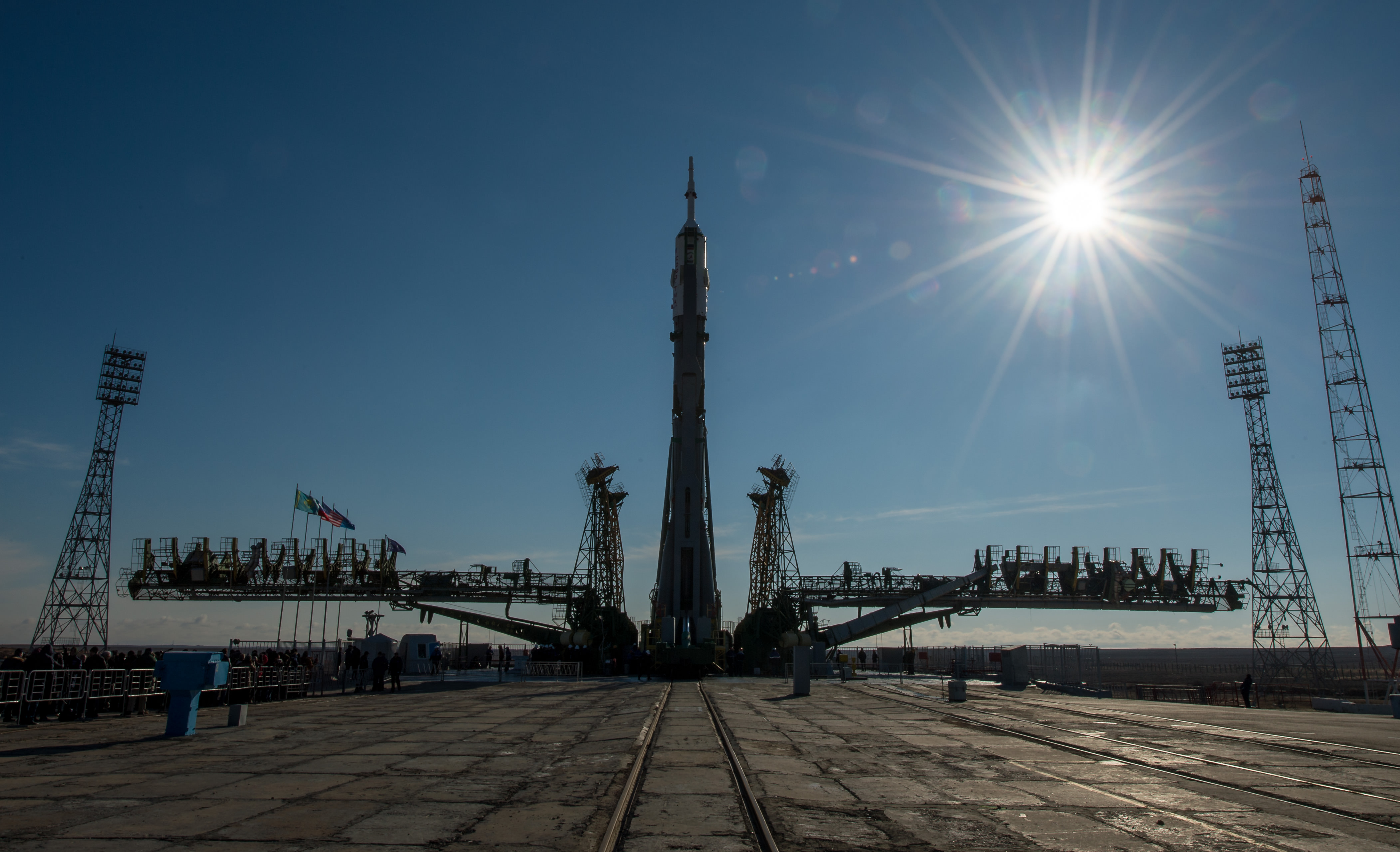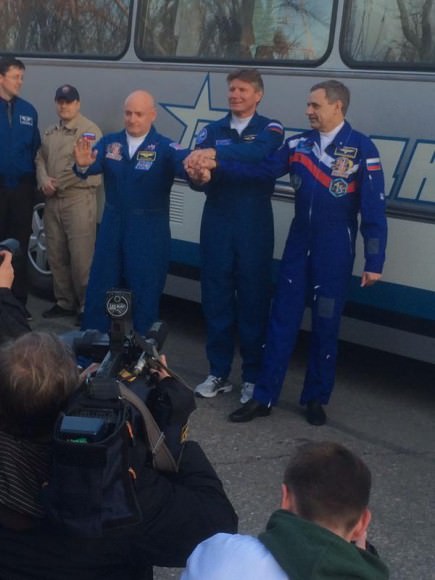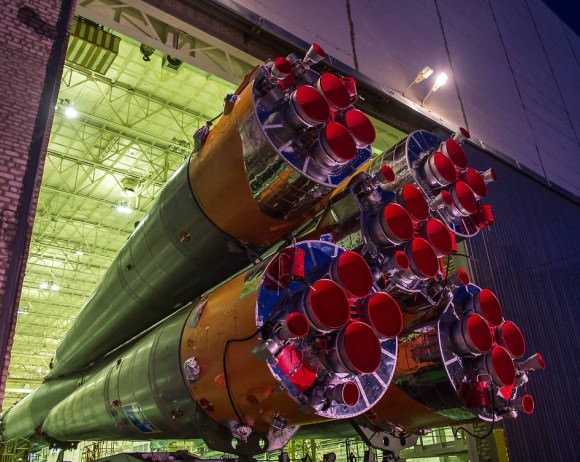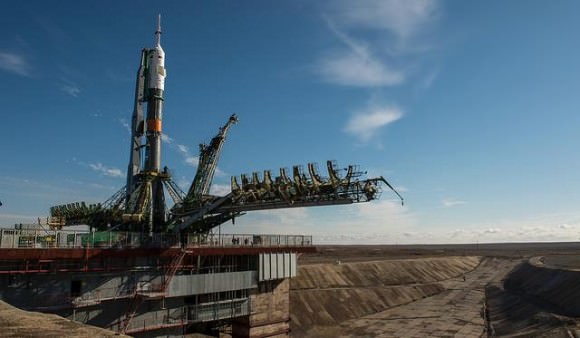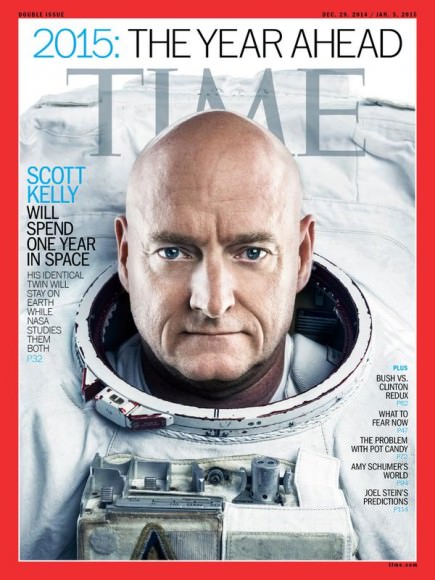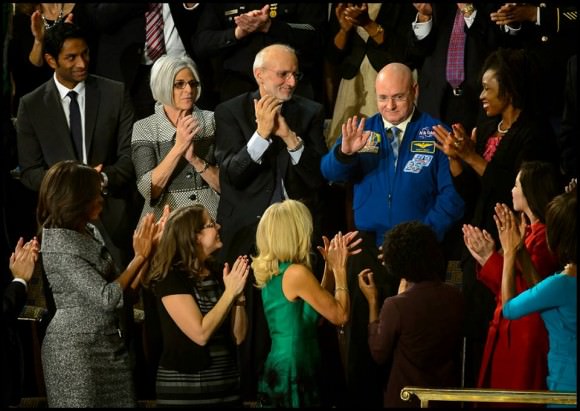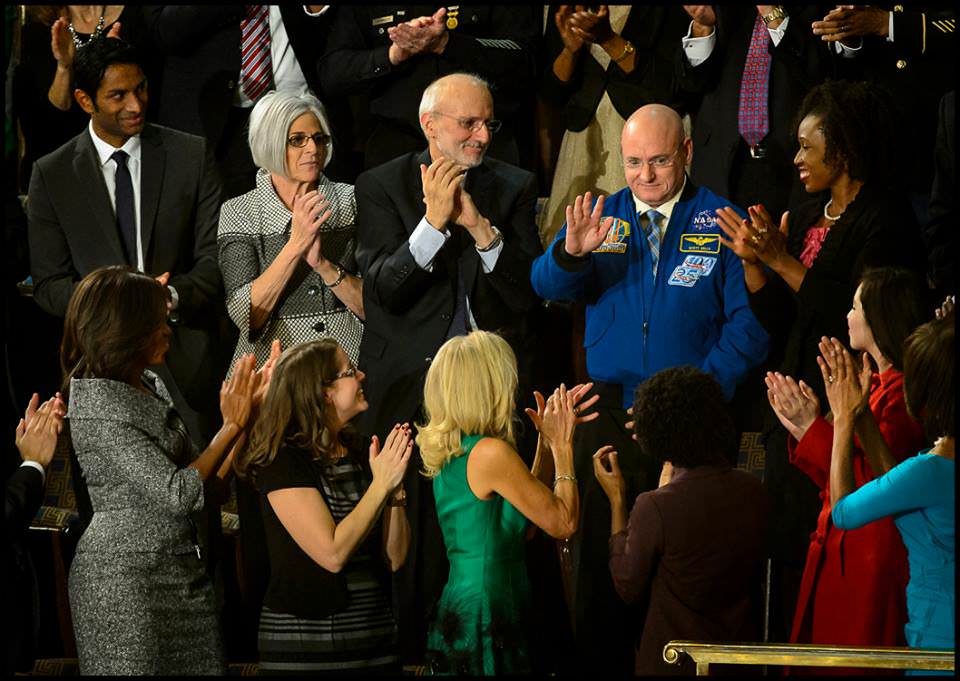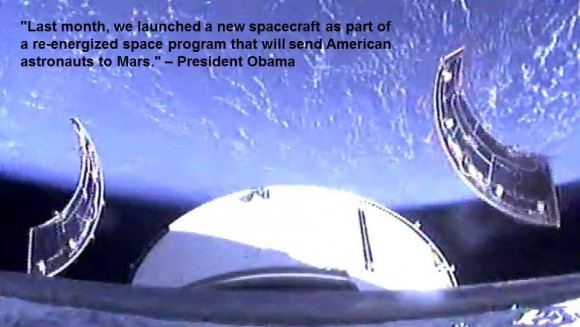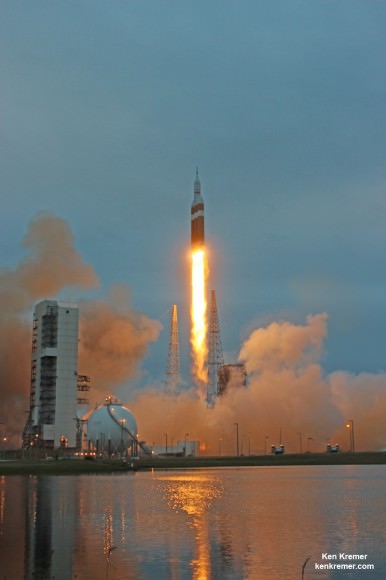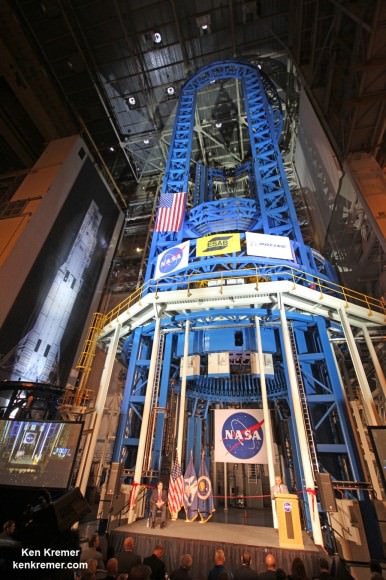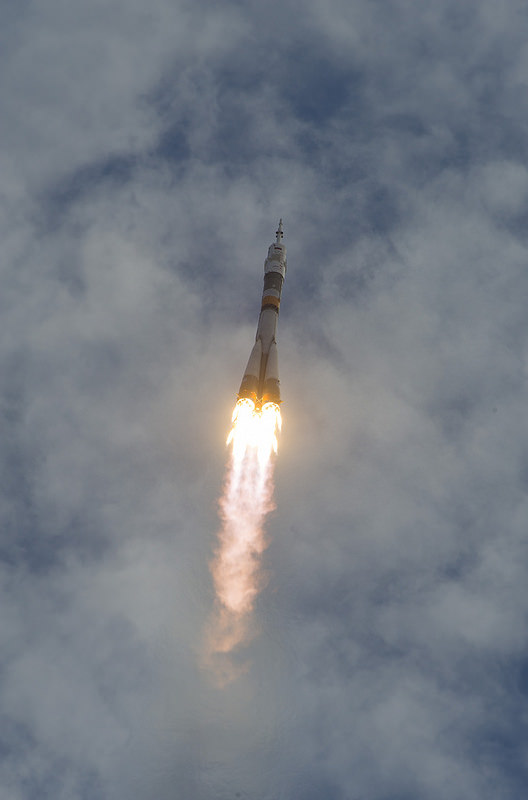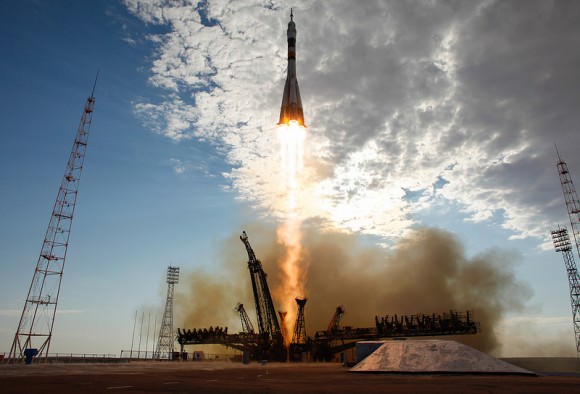The first ever ‘One-Year Mission’ to the International Space Station (ISS) started with a bang today, March 27, with the spectacular night time launch of the Russian/American crew from the Baikonur Cosmodrome in Kazakhstan at 3:42 p.m. EDT Friday (1:42 a.m., March 28 in Baikonur and culminated with a flawless docking this evening.
NASA astronaut Scott Kelly and Russian cosmonauts Mikhail Kornienko and Gennady Padalka launched aboard a Soyuz TMA-16M spacecraft to the International Space Station precisely on time today on the Expedition 43 mission.
The crew rocketed to orbit from the same pad as Russia’s Yuri Gagarin, the first human in space.
Kelly and Kornienko will spend about a year living and working aboard the space station on the marathon mission. Padalka will remain on board for six months.
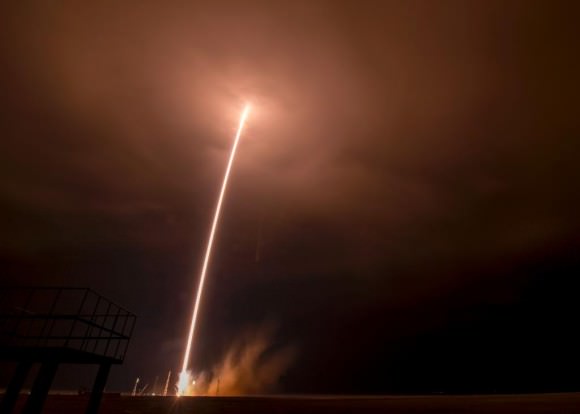
The goal is to use the massive orbiting outpost to provide critical knowledge to NASA and researchers hoping to better understand how the human body reacts and adapts to long-duration spaceflight and the harsh environment of space.
The pathfinding mission is about double the normal time of most expeditions to the Earth orbiting space station, which normally last four to six months.
The one-year mission is among the first concrete steps to start fulfilling NASA’s “Journey to Mars” objective of sending “Humans to Mars” in the 2030s.
“Scott Kelly’s mission is critical to advancing the administration’s plan to send humans on a journey to Mars,” said NASA Administrator Charles Bolden, in a statement.
“We’ll gain new, detailed insights on the ways long-duration spaceflight affects the human body.”
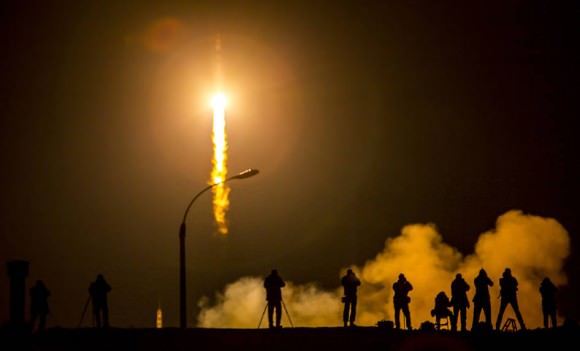
This evening the three man international crew successfully rendezvous and docked at the ISS at the Poisk module at 9:33 p.m. EDT – just four orbits and six hours after liftoff.
‘Contact and capture confirmed, 1 year crew has arrived,’ said the NASA launch commentator Don Huot. “The one-year crew has arrived.”
“Soyuz is firmly attached to the ISS.”
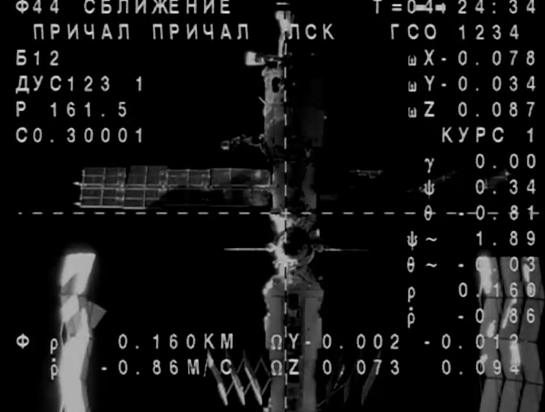
Docking took place about 253 kilometers off the western coast of Colombia, South America approximately 5 hours and 51 minutes after today’s flawless launch from Baikonur.
The crews are scheduled to open the hatches between the Soyuz and ISS at about 11:15 p.m. EDT/315 GMT this evening after conducting pressure, leak and safety checks.
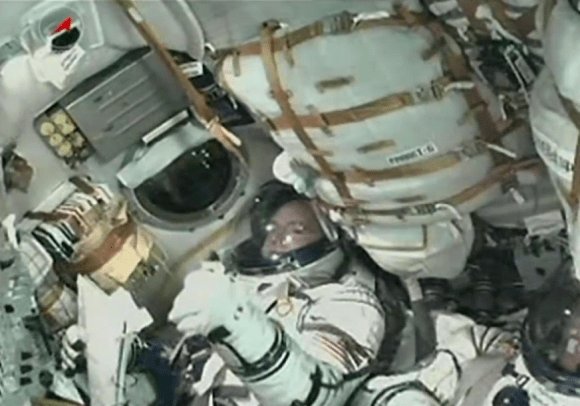
The arrival of Kelly, Kornienko and Padalka returns the massive orbiting outpost to its full six person crew complement.
The trio joins the current three person station crew comprising Expedition 43 commander Terry Virts of NASA, as well as flight engineers Samantha Cristoforetti of ESA (European Space Agency) and Anton Shkaplerov of Roscosmos, who have been aboard the complex since November 2014.
“Welcome aboard #Soyuz TMA-16M with Genna, Scott, and Misha- we just had a succesful docking,” tweeted Virts this evening post docking.
The 1 Year mission will provide baseline knowledge to NASA and its station partners – Roscosmos, ESA, CSA, JAXA – on how to prepare to send humans on lengthy deep space missions to Mars and other destinations in our Solar System.
A round-trip journey to Mars is likely to last three years or more! So we must determine how humans and their interactions can withstand the rigors of very long trips in space, completely independent of Earth.
Astronaut Scott Kelly will become the first American to live and work aboard the orbiting laboratory for a year-long mission and set a new American duration record.
Scott Kelly and Russian Cosmonauts Kornienko and Padalka are all veteran space fliers.
They have been in training for over two years since being selected in Nov. 2012.
No American has ever spent anywhere near a year in space. Four Russian cosmonauts – Valery Polyakov, Sergei Avdeyev, Vladimir Titov and Musa Manarov – conducted long duration stays of about a year or more in space aboard the Mir Space Station in the 1980s and 1990s.
Kelly and Kornienko will stay aboard the ISS until March 3, 2016, when they return to Earth on the Soyuz TMA-18M after 342 days in space. Kelly’s combined total of 522 days in space, will enable him to surpass current U.S. record holder Mike Fincke’s mark of 382 days.
Padalka will return in September after a six month stint, making him the world’s most experienced spaceflyer with a combined five mission total of 878 days in space.
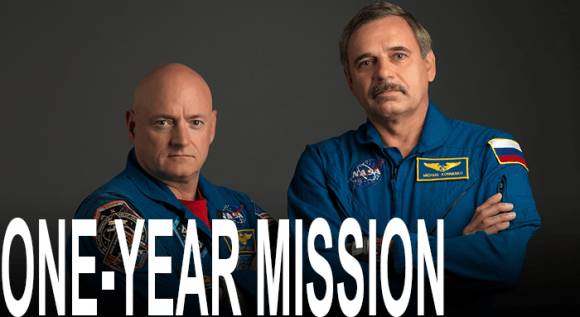
They will conduct hundreds of science experiments focusing on at least 7 broad areas of investigation including medical, psychological and biomedical challenges faced by astronauts during long-duration space flight, as well as the long term effects of weightlessness and space radiation on the human body.
Another very unique science aspect of the mission involves comparative medical studies with Kelly’s identical twin brother, former NASA astronaut and shuttle commander Mark Kelly.
“They will participate in a number of comparative genetic studies, including the collection of blood samples as well as psychological and physical tests. This research will compare data from the genetically identical Kelly brothers to identify any subtle changes caused by spaceflight,” says NASA.
Scott Kelly is a veteran NASA Space Shuttle commander who has previously flown to space three times aboard both the Shuttle and Soyuz. He also served as a space station commander during a previous six-month stay onboard.
Good luck and Godspeed to Kelly, Kornienko and Padalka – starting humanity on the road to Mars !!
Stay tuned here for Ken’s continuing Earth and planetary science and human spaceflight news.
